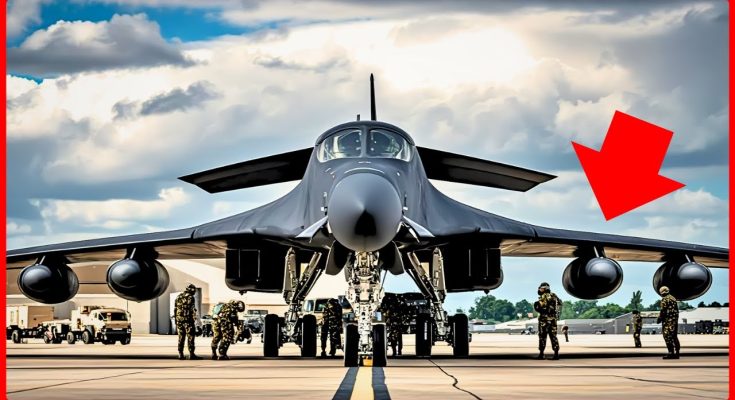The recent aggressive upgrade of the U.S. Air Force’s New Super B-1 Lancer bomber has sent shockwaves through the global defense community, stunning rival nations with its technological advancements, increased combat capabilities, and enhanced strategic value. This modernization effort demonstrates the United States’ commitment to maintaining air superiority and enhancing its long-range strike capabilities in the face of growing threats from geopolitical adversaries.
The New Super B-1 Lancer, an upgraded version of the original B-1B Lancer, was first introduced during the 1980s as a supersonic, variable-sweep wing strategic bomber capable of delivering both conventional and nuclear payloads. While the B-1B was already a potent asset, the new modifications have taken the aircraft to a completely different level. One of the most significant changes includes a state-of-the-art avionics overhaul, which integrates advanced radar systems, improved cockpit displays, and cutting-edge electronic warfare capabilities. These upgrades make the Super B-1 far more adaptable in contested airspaces and resistant to enemy countermeasures.
Perhaps the most striking feature of the New Super B-1 Lancer is its enhanced payload capacity and extended range. The original B-1B could carry a large arsenal of precision-guided munitions, but the New Super B-1 can now accommodate even more advanced weapons, such as hypersonic missiles and an expanded variety of bombs, making it an even more formidable platform for rapid strikes. Furthermore, its range has been substantially improved, ensuring that the bomber can strike targets across vast distances without the need for frequent refueling. This makes it particularly valuable in regions where forward basing is challenging or politically sensitive.
The aircraft’s stealth capabilities have also been significantly upgraded. While not a stealth bomber like the B-2 Spirit, the Super B-1 now incorporates technologies designed to reduce its radar cross-section, making it harder to detect by enemy radar systems. These modifications allow the bomber to operate in high-threat environments with greater confidence and precision, especially when conducting operations against heavily defended targets.
The impact of these upgrades is felt far beyond the technological sphere. Rival nations, particularly those with adversarial relationships with the United States, are watching the New Super B-1 Lancer with growing concern. China and Russia, in particular, have long been focused on enhancing their air defense capabilities and countering American strategic assets. The news of the B-1’s enhanced capabilities will undoubtedly lead to renewed investment in anti-aircraft systems, cyber warfare measures, and potential countermeasures designed to target bombers that operate at high speeds and low altitudes.
Moreover, the New Super B-1 Lancer plays a crucial role in the broader shift towards a more agile and flexible U.S. defense posture. With its combination of advanced technologies and immense strike power, the Super B-1 can be rapidly deployed to any conflict zone, projecting power and deterring potential adversaries. This multi-role versatility allows the U.S. to maintain its global military dominance, capable of responding to a wide range of threats, from regional conflicts to full-scale wars.
In conclusion, the aggressive upgrades to the New Super B-1 Lancer bomber signify a bold step forward in the evolution of U.S. airpower. These technological advancements, paired with the aircraft’s enhanced capabilities, ensure that it will remain a cornerstone of American military strategy for years to come. For rival nations, the sight of the New Super B-1 in action will undoubtedly spark both fear and admiration, as it solidifies the U.S. as a leader in next-generation warfare.



